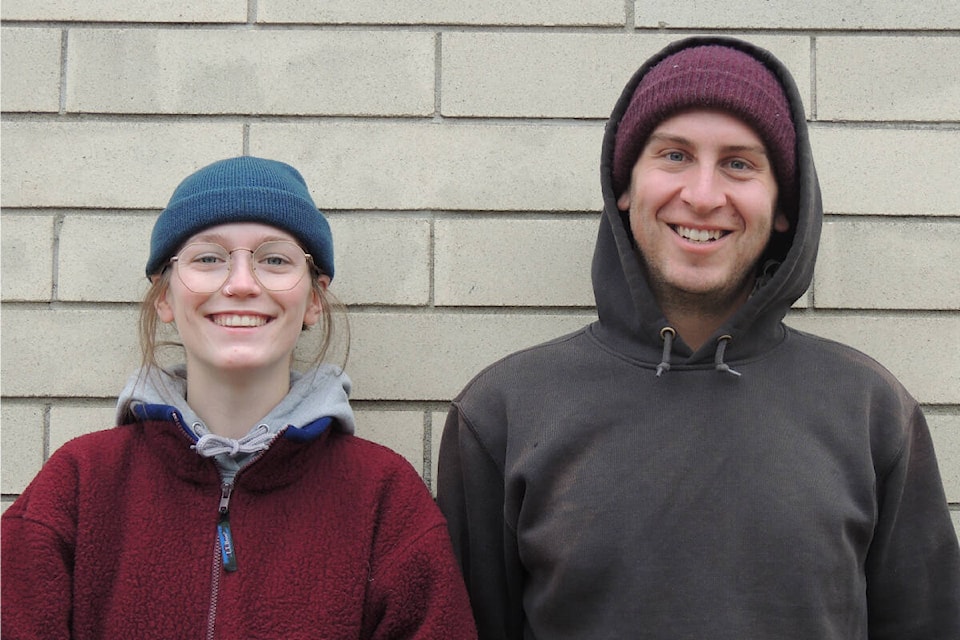Submitted by Darren Amm and Emma Lognon, Selkirk College Recreation Fish and Wildlife students
Like humans, bats are facing a pandemic of their own known as white-nose syndrome (WNS) caused by a fungus (Pseudogymnoascus destructans) causing bat colony collapse across North America and threatening our endangered species in British Columbia.
Bats are a keystone group of species that are responsible for pest control throughout the world, their existence and habits have a direct impact on agriculture, medicine, and ecosystem stability. The Kootenay Boundary is home to the largest hibernaculum in the province and houses seven species of bats including several species at risk. With white-nose syndrome on our doorstep, biologists are proactively moving to protect these bats.
Take for example, the little brown bat (Myotis lucifugus) which has been hit the hardest by WNS in eastern states and provinces. The Canadian federal species at risk assessment predicts the little brown bat will be functionally extirpated (i.e. \1% of existing population) in the northeastern United States within 16 years.
According to the Edmonton Land Trust spotlight on the species, this bat is a water skimmer that can eat up to 600 insects an hour. This important species has one or two offspring per year and each pup only has a 50 per cent survival rate within their first year, making it susceptible to quick collapse and slow recovery. These critters roost in small crevices of rocks, under semi-removed bark and inside bat boxes during summer, and then hibernate underground to conserve energy and fat stores in the winter months when food supply is limited.
White-nose syndrome is a fungus that attaches to the soft tissue of a bats’ wings and can work its way to their nose. As it eats away the soft tissue, bats are forced to expend energy to combat the fungus’ effects. In the summer months this isn’t an issue with plenty of food and water available. However, winter isn’t easy for bats and the fungus forces bats to wake during hibernation in search of replenishment thus using their fat stores and depleting them to a point beyond recovery. According to the Center for Biological Diversity, WNS often has a rate of mortality exceeding 70-90 per cent in many affected colonies.
The fungus that causes WNS has been wreaking havoc in eastern U.S. and Canada since 1999 and has resulted in millions of bat deaths. There are no current cases in British Columbia, but it would be foolhardy to think the spread is anything but inevitable, as cases have already been documented in Saskatchewan and Washington.
A local bat specialist, noted author, researcher, and director of bat conservation with the Wildlife Conservation Society Canada, Cori Lausen, puts it best, “Based on what we know about physiology and based on what we know about ecology, there’s no reason to think that WNS is not going to wipe out bats in western U.S. and Canada just like it has in the east.”
This infectious fungus was thought to be spreading like wildfire but recent data shows a slower spread rate, perhaps due to Northwestern bat species unique behaviour of roosting in small groups in crevices. This makes tracking and identifying roosting locations much more difficult for researchers. Consequently, protection for bats and their habitat is unduly put on hold due to the perceived lack of urgency.
However, Lausen is working on treatments for WNS and conservation efforts in the Kootenays and well beyond, collaborating with both the Canadian and American federal governments. She and her team have made amazing feats of progress towards combating this voracious fungus with treatments in the field-testing stage. These treatments, however promising, are useless unless the bats are monitored and WNS symptoms reported.
The vast habitat and area these critters can cover makes this a task too big for Lausen and her team so public engagement is necessary. Citizen science counts provide information on where and how many bats are roosting or over-wintering in known habitats. Each spring and throughout the summer citizen scientists can select a bat box or known bat roost and count how many bats are coming and going from the entrance, a minimum of two summer counts are required, but the more the better. Reporting the numbers and unusual behaviours (to www.bcbats.ca) allows bat populations in B.C. to be tracked, and potentially infected bats to be identified for subsequent sampling.
For more information on bats, their conservation, or Cori Lausen’s work be sure to check out the bat section of WCS (Wildlife Conservation Society of Canada).
Darren Amm and Emma Lognon are students attending Selkirk College’s Recreation Fish and Wildlife program
READ MORE: The relationship between cottonwoods and beavers in Kootenay ecosystem
newsroom@castlegarnews.com
Like us on Facebook and follow us on Twitter
